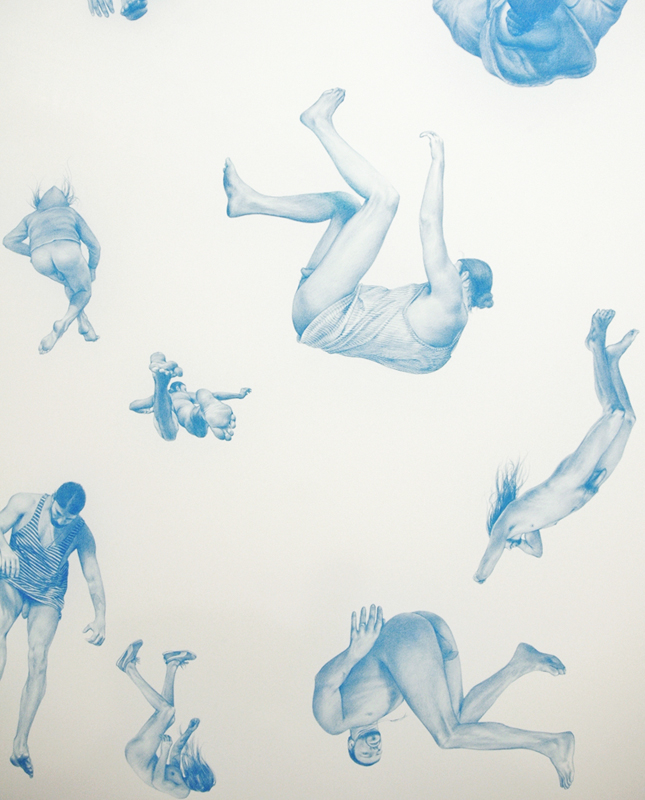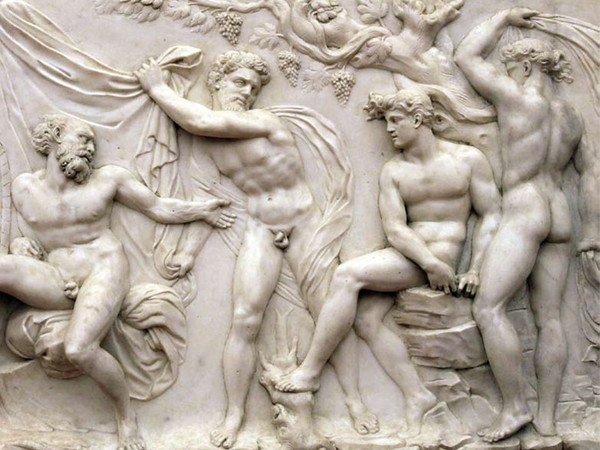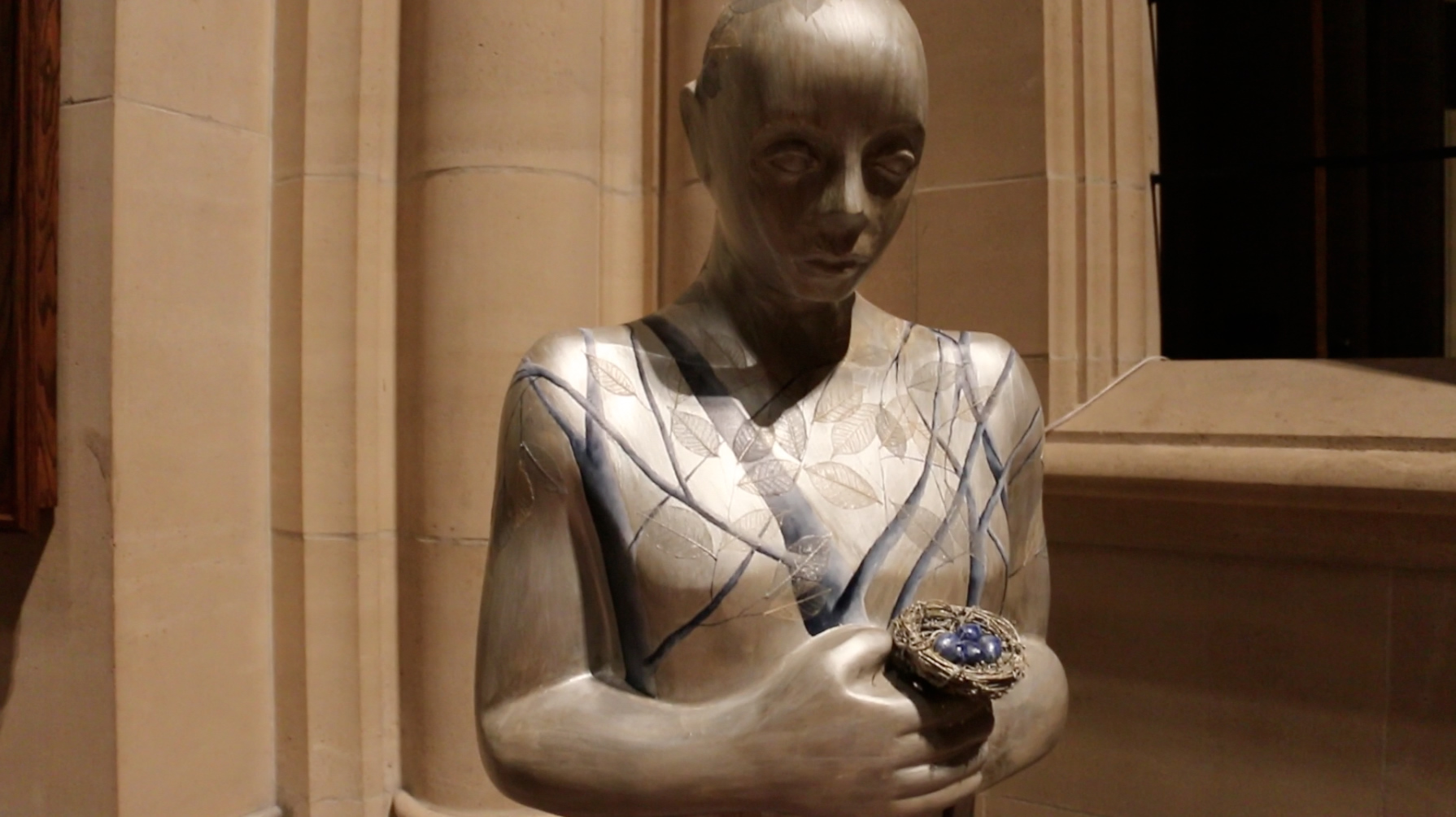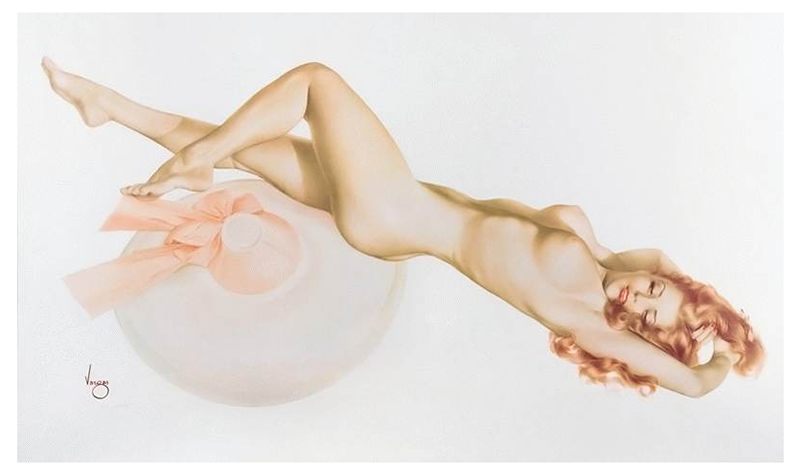Zachari Logan: The Stick Man
Daniel Cooney Gallery
Oct 27 – Nov 26, 2011
The number of times you’ll hear an artist claim that his or her works are autobiographical can be numbing in their frequency. In the drawings of Zachari Logan, this aspect of “Self” is acutely manifest and integral not only to the images he presents to us, but in the telling of his personal history and his coming to grips with his identity as a gay male.Maybe it’s not so much “coming to grips” with one’s own desires, but specifically with the expectations that family and society still place on an artistic individual such as Logan, who grew up in a small town in Canada.
There is a movement in the art world called queer art, actually a category in many fields as well as cultural studies, which aims to mainstream and highlight the accomplishments of homosexual individuals in the hopes that what is familiar cannot be demonized. Much of what is presented however in other artists works tends to be vapid and devoid of content – outside of this self-referential category. That this sense of identity is one dimensional and only referencing the sexual aspect of oneself can be boring, if not titulating.
Logan’s work rises above this context because of the sheer strength of his capabilities as a draftsman, and his specific, unusual subject matter, which while not shying from sexual content goes to depths that one could define as the excising of personal demons through one’s art.
In works such as ‘Go To Hell’ and ‘Falling’ there is the sense of the figures letting go after personal rejection. In ‘Falling’ the fight has completely gone out of the body, which could be proceeded by the mind giving in to failed expectations or societal rejection. Keeping in mind that Logan primarily features himself as the protagonist in his work, it is absolutely autobiographical as his response to an unseen antagonist outside the picture plane.
A beautiful drawing with the name ’26 Months’ while not featuring nudity, is pertinent to some understanding of his oeuvre. Taken from a photo of himself at that age, the drawing is completely composed not of lines but the word “faggot” written hundreds of times with varying degrees of opacity. It’s something I did not notice until the artist pointed it out to me, and even after I had to get within a few inches of the piece to see it. This brings us back to the integral sense of rejection that I believe he is trying to convey.
Another theme Logan works into his art is of nature or literally one’s nature. In ‘Stick Man’ which was displayed on the floor in a case almost 8 feet in length. Like inspecting a strange new creature in the comfort of a natural history museum, safely separated from this creature by the glass, is a strange hybrid of man and stick. Oblivious of this being’s pain and confinement, the viewer is content to observe from a different perspective.
Continuing in this transformative motif is the piece ‘Daphne’ if you remember your Greek mythology, Daphne was a nymph and had the uniquely unfortunate problem of being pursued romantically by the god Apollo after he was shot with an arrow of desire by Cupid. As she raced away from him she prayed to the river god Peneus, who took pity on her and turned her into a tree. (Interesting how the gods never see fit to chastise one of their own, it’s always the maiden who simply wants to be left alone that gets turned into something!) For this graphite drawing, the artist takes the place of Daphne and is effectively rooted to the ground and sprouting branches. As in the antagonists of prior images, who or what is pursuing him is left for us to guess.
A final graphite in this series of ‘Trees’ features the artist fully engulfed in his new persona, with only his right arm exposed (with tattoos on the wrist descriptive of foliage.) The hand lying limply in the grass suggesting a complete relinquishment to his new form. The chase has ended and now is time for calm. Maybe some form of peacefulness has finally settled on him, in life as in metaphor, maybe the artist has come into a peace with his nature. In these autobiographical works Logan has masterfully transcended the genre.











